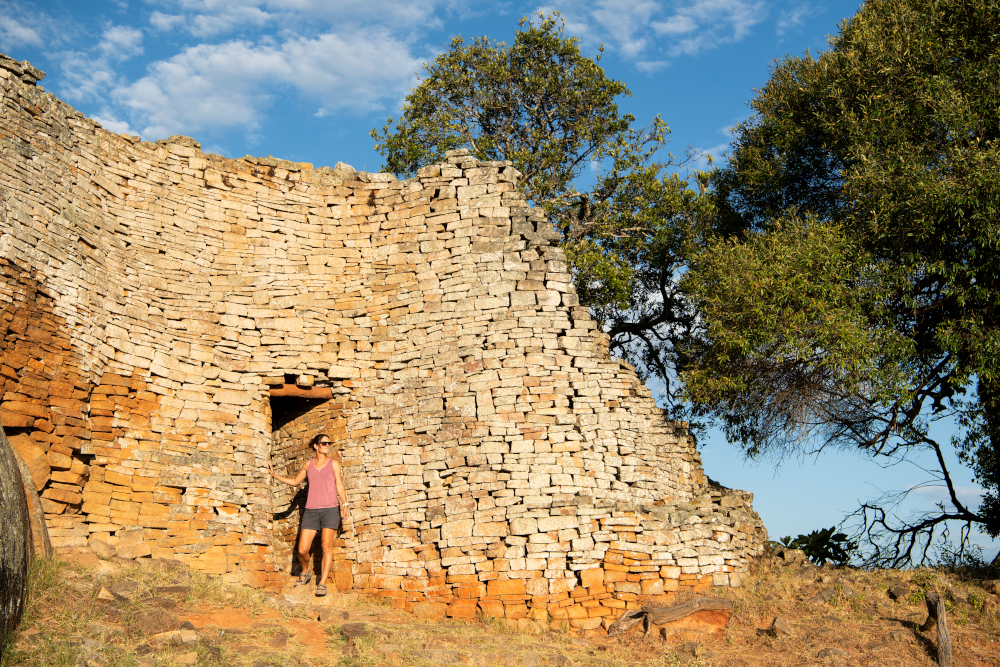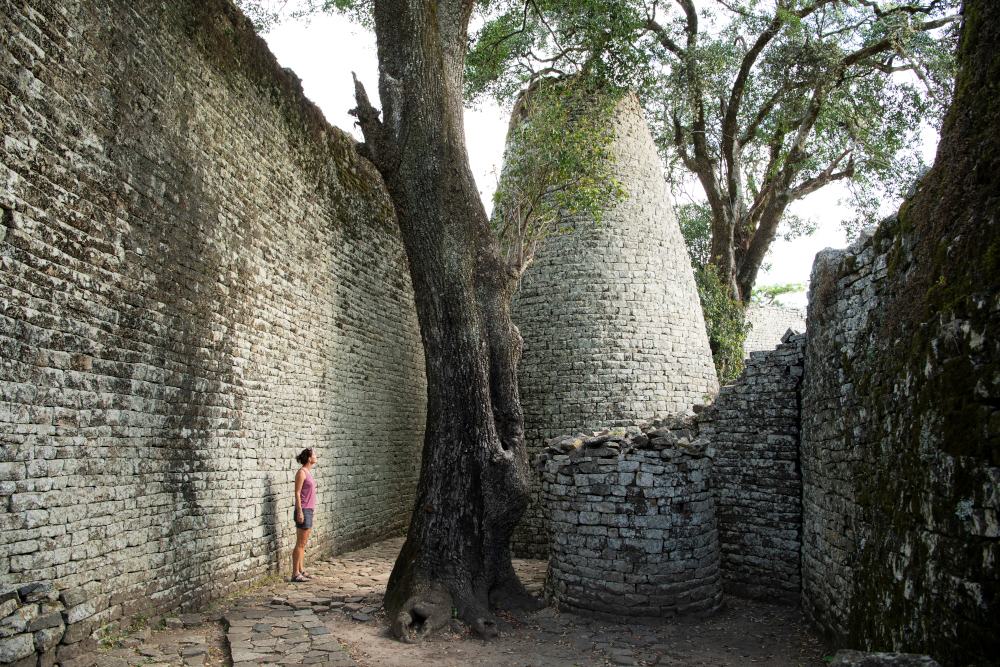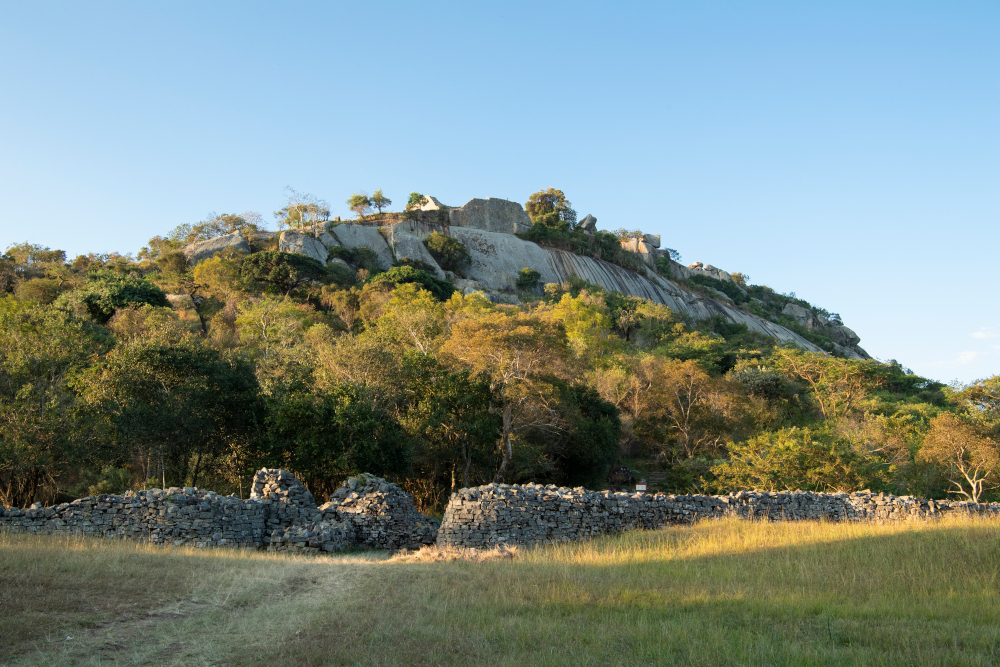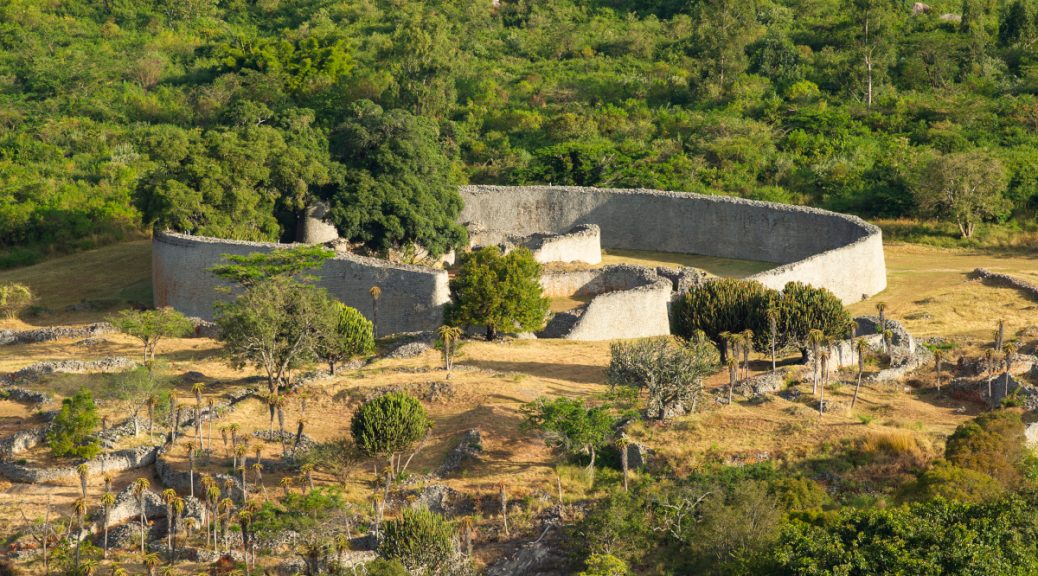Surely one of the continent’s most atmospheric destinations, Great Zimbabwe is also one of the most enlightening. Philip Briggs, author of several African guidebooks, reports back on a recent visit.
When it comes to planning a Zimbabwe itinerary, Victoria Falls, along with stellar national parks such as Hwange and Mana Pools, tops most people’s travel wish list. But South Africa’s landlocked northern neighbour boasts one other absolute must-see: the ruined city of Great Zimbabwe.
I first visited Great Zimbabwe in the 1980s, an atmospheric highlight of a lengthy backpacking trip between Kenya and South Africa. Having travelled extensively in the region over subsequent years, Great Zimbabwe stood out in my memory. It is probably the most awesome ruin in subequatorial Africa. It is rivalled only by its mediaeval trading partner Kilwa Kisiwani on the coast of Tanzania. So when my wife, Ariadne, and I drove up to Zimbabwe this past winter, it was a high priority. I wanted to revisit the magnificent stone citadel that so impressed me all those years ago.

The word Zimbabwe derives from the local Shona madzimbahwe, which roughly translates as ‘Houses of Stone’. Yet, the name is not specific to the city of Great Zimbabwe. It actually also applies to many other drystone ruins dotted around the southern African interior. However, Great Zimbabwe is far and away the most extensive and impressive of these abandoned structures. It is also one of only two – the other being the smaller Khami Ruins outside Bulawayo – that has been inscribed as a UNESCO World Heritage Site.
Inside the ruins
Great Zimbabwe can only be explored on foot, and it took us three to four hours to take in the highlights. We started at the Great Enclosure, a much photographed oval structure. Its stone walls stand over 10m tall and are capped by twin layers of zig-zag chevron patterns. This immense enclosure was built entirely without mortar and has the largest footprint of any ancient structure in Africa south of the Sahara. Buttressed against the southeast wall of the enclosure is a unique and mysterious tapered tower. None of the region’s other stone ruins feature anything like it. The Conical Tower is Great Zimbabwe’s most famous and photogenic feature. Its resemblance to a traditional granary has led to speculation that it was once used for harvest ceremonies or fertility rituals.

From the Great Enclosure, a short walk took us to the base of the older and more sprawling Hill Complex. This fortified koppie has probably been occupied since the 9th century AD. Ascending the koppie along a steep, rocky footpath, we entered an atmospheric labyrinth. Narrow passages and tall drystone walls wend around a cluster of immense natural granite boulders. The complex is thought to have served as a royal residence, but it also probably incorporates some religious structures. Clambering around this portion of the ruins was great fun, and the elevated views across to the Great Enclosure were absolutely breathtaking!
Great Zimbabwe’s origins
A mountain of speculative nonsense has been written about Great Zimbabwe over the years. Early European visitors were convinced that the drystone architecture was too sophisticated to be the work of the local people. Instead, they came up with all manner of wild notions about its origin. Some claimed it was built as a place for the Biblical Queen of Sheba, others that it was the site of King Solomon’s Mines. Still others thought it was constructed by wanderers from Egypt or Arabia. These utterly baseless ideas have long been dismissed by serious scholars, but they were actively propagated into the 1970s by the government of then-Rhodesia. Fitting, then, that when this former British colony became independent in 1980, it was renamed in honour of Great Zimbabwe.

The long campaign of misinformation surrounding the origin of Great Zimbabwe makes it doubly worth dedicating time to the small but informative museum. Here, a series of displays and exhibits reveal the true history of Great Zimbabwe. The city was founded about a thousand years ago as the capital of a well-organised kingdom. Its inhabitants were ancestral to the modern-day Shona of eastern and central Zimbabwe. Back then, Zimbabwe formed part of a trade network that exported locally mined gold to Indian Ocean ports such as Sofala and Kilwa Kisiwani. From there the gold was sold on to mercantile ships from Arabia and Asia. Indeed, Great Zimbabwe in its heyday is thought to have been the source of roughly one-quarter of the world’s gold. Around 20,000 people called it home.
Highlights from the museum
Displays in the museum show the trade routes used to transport gold and ivory from Great Zimbabwe to the Swahili Coast. They also explain the dry stone construction techniques employed by the city’s builders.

For us, a highlight of the museum was the displays of various antiquities unearthed during excavations at the site. These range from local earthenware to a 14th-century copper coin minted at Kilwa Kisiwani and goods imported from Persia and China. The museum’s crowning glory, stashed away in an inauspicious back room, is a collection of mysterious 40cm-high soapstone Zimbabwe Bird statues unearthed in the Hill Complex. These mysterious sculptures are now the national symbol of Zimbabwe.
Also read: Discover Kilwa Kisiwani
How to visit
For self-drivers, Great Zimbabwe could hardly be easier to reach. We drove to the gateway town of Masvingo from Chipinda Pools in Gonarezhou National Park. This took about five hours along a mostly tarred road. The more common approaches to Masvingo are from the Beitbridge border post or the capital, Harare. The town lies about halfway along the 600km road that connects them. However you get to Masvingo, a good surfaced 30km road runs southeast from town to the entrance gate to the national monument.
There are plenty of options for camping in and around Great Zimbabwe. The official chalet and campground within the national monument is strong on bush atmosphere and tends to be very quiet. However, running water has been an ongoing issue in recent years. We stayed instead at the venerable Great Zimbabwe Hotel, which is less characterful but more reliable in terms of amenities. This lies within 10 minutes’ walk of the national monument. You can pitch a tent at the hotel, but we stayed in one of its budget standing tents, which are comfortable and affordable, and come complete with mattresses and bedding.
Zimbabwe in focus
The Tracks4Africa team is hard at work researching and gathering information for a Zimbabwe Self-Drive Guide. This past winter team members undertook three separate research trips to verify roads and discover points of interest. Great Zimbabwe was one of the first stops for T4A’s Johann Groenewald, who took this panorama. It shows the view from the Hill Complex – something you have to see for yourself.

If you have recently travelled in Zimbabwe, please share your tracks with us. Little travelled roads and unknown sites are of particular interest. But we are not only interested in the country’s unmapped routes. Data on more established destinations can help us confirm distance and travel times. You can also submit your recommendations and travel tips to newdata@tracks4africa.co.za.


Last year we went to the Bridal Veil Falls. You can camp there and if you do it at full moon you will get a breathtaking view.
Thanks for sharing your recommendation. It is indeed a stunning place, will need to see it at full moon.